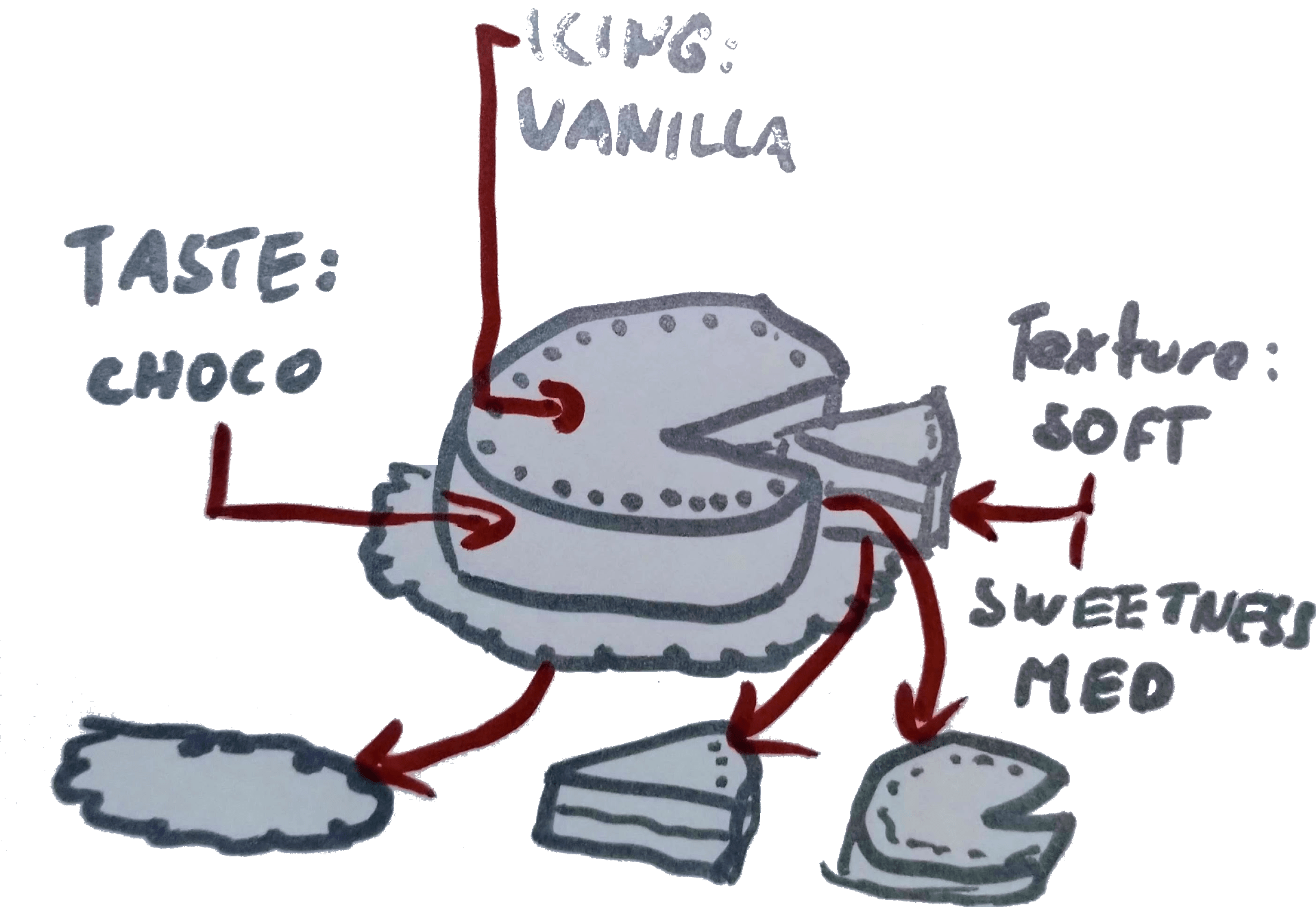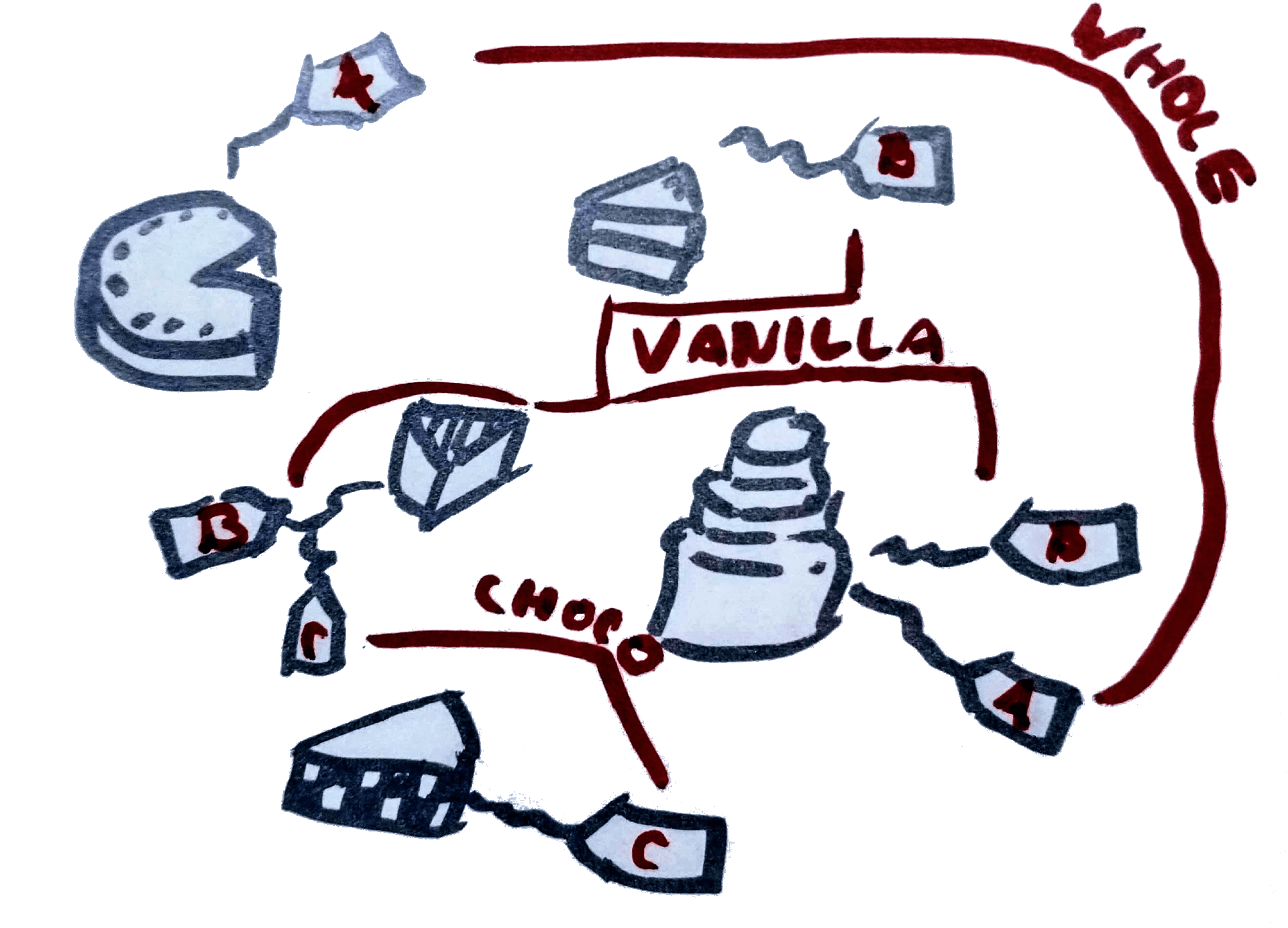An agile business needs to quickly interpret external actions, make a decision understood across all involved teams and execute. A global taxonomy speeds up this process. A global taxonomy helps interpret external actions and collected data, align employees, and gather materials for execution and improvement. A global taxonomy helps showcase an individual’s contribution to the shared goals.
As a follow-up to my previous article, I will make a case for a taxonomy-driven business, not only for taxonomy-driven content operations.
The setup
I imagine an ideal scenario where a global business-wide taxonomy is implemented for all important decision points. A quick recap, I’m working with the following content framework:

The defined taxonomies target the lower part of this framework marked as the “Foundation.” This way, the taxonomies are more stable and thus more future-proof. This framework is focused on content operations but taxonomies targeting the “Foundation” can also be used in other parts of the business. Let’s explore!
Supported objects and selecting taxonomies
This business implemented processes to attribute taxonomy metadata to the following objects:
- Online traffic
- Offline interactions
- Personas
- Customer profile
- High-value content chunks
- Customer communications
- Internal communication
- Products
- Product Features
- Wins and churns
Our fictitious business identified a global taxonomy describing business (green) and customer (blue) aspects:

If you have time, select one of these taxonomy groups and replace the terms with your own to make this more relatable. Other examples could be a taxonomy group representing your OKRs, business vision and mission (and, to an extent supporting aspects), and SWOT attributes, to name a few.
Ideally, these attributes/aspects should be useful, stable, but also revisable and extendable. This taxonomy has a single source of truth, regularly evaluated and audited.
⚠ It’s important that these taxonomies and terms communicate what’s not searchable. A taxonomy term that is also available in the object itself (and searchable) doesn’t add value, it duplicates content entry efforts without added value.
Additional considerations:
- The business has access to granular statistics for content consumption to a content-chunk level.
- The business can track buyer stages.
- Customers of this business can give feedback on objects where taxonomies are assigned to where relevant.
- The taxonomies (and their terms) are understood, used, and have buy-in from employees.
- Tagging doesn’t overwhelm employees and can be supported via machine learning.
The examples
Communicating employee’s contribution value
With great taxonomy coverage, the business can give concrete examples of how individual employee contributions helped customers and the business achieve their goals.
The below example focuses on the development, but it can be abstracted to many other roles as well, such as customer support, customer success, or content contributors. The advantage of a unified setup is that every employee understands these clearly defined taxonomy terms. Taxonomy terms are understood across departments and teams. This benefits cross-department communication and collaboration and enables the buy-in of internal stakeholders.

Empowering the marketing department with content discovery
The company knows: What can’t be found doesn’t exist. A typical use case can be to evaluate past content impact based on consumed content before converting a customer.
Our forward-thinking business can quickly identify patterns, as every purchase is automatically tagged with topics (and customer’s time spent or the number of occurrences in the customer journey).
Based on this setup, marketing identifies top-performing taxonomy terms. Then, it discovers (or creates) fresh collateral based on these terms. The found content is then reused in landing pages or email campaigns. This example can be expanded with personalization, where personas are based on these foundational taxonomies. (Note: Personas themselves shouldn’t be taxonomy terms as they are always revised.)
Marketing quickly adjusts campaigns, if discovered, that targeting other taxonomy terms delivers better results.
Moreover, investing in a robust taxonomy framework empowers roles in any customer-facing position. It promotes content discoverability. Imagine finding and quickly composing an email (message, report, leaflet) containing information (graphs, charts, documentation excerpts, feature releases) relevant to customers and their current pain points. This would be game-changing for pre-sales, sales, support, consulting, or customer success roles.

Insights for strategic decisions
This business can make more informed strategic decisions. The business monitors external stakeholder actions (competitors, subject matter experts) and industry trends. The chosen taxonomy terms are universal and thus can also be applied to external events and objects.
The practice of categorizing external objects is useful for an overview of industry and competitor movement. This, in turn, can be used to make more informed internal decisions.

And more…
…examples of tasks that will benefit from a global taxonomy follow.
- Prioritize funding to products or services neglected last year based on customer goals.
- Find a fitting case study based on customer goals.
- Find relevant product requests aligning with at least one business goal and one customer task.
- Find blog content produced last year to support the considerations buyer’s stage and help customers improve their operations.
- Compare content items’ performance targeting different customer goals.
- Find content coverage for business goals to decide what to focus on next.
- Show an individual employee’s contribution value to a customer or business goal.
- Identifying content and objects that helped convert a lead.
Reach out if you’d like to see a breakdown of any of these, have other suggestions to be included, or disagree with anything.
The closing thoughts
The outlined scenario and examples show how useful implementing a business-wide taxonomy is. It supports low-level day-to-day tasks to high-level, strategic decisions.
A global, well-defined taxonomy gets you closer to your goal than just sharing aspirational vision and mission statements. It helps with cross-team communication to align team-specific goals across the business as the taxonomy is shared by everyone.
Taxonomies might even be granular enough to drive content experiences with useful metadata on your content channels.




